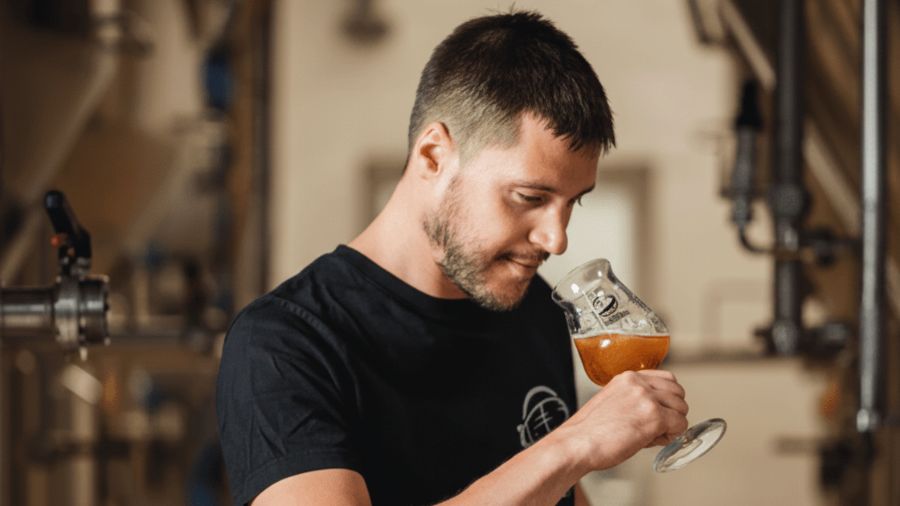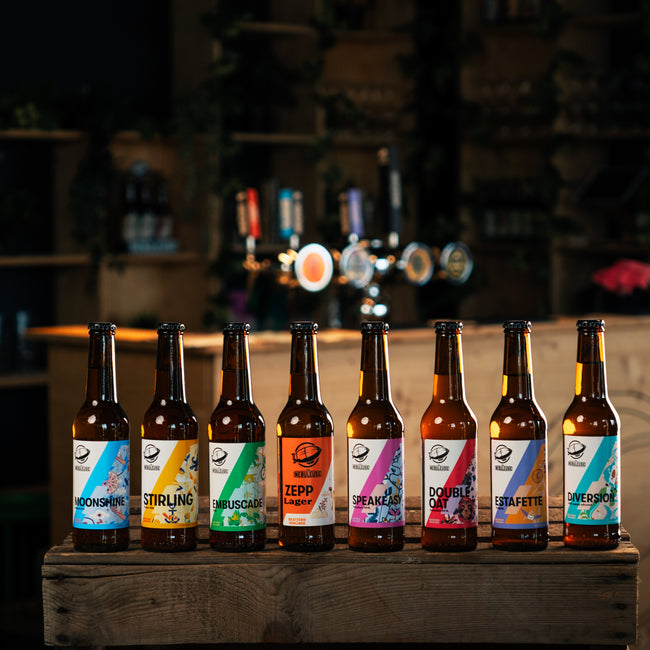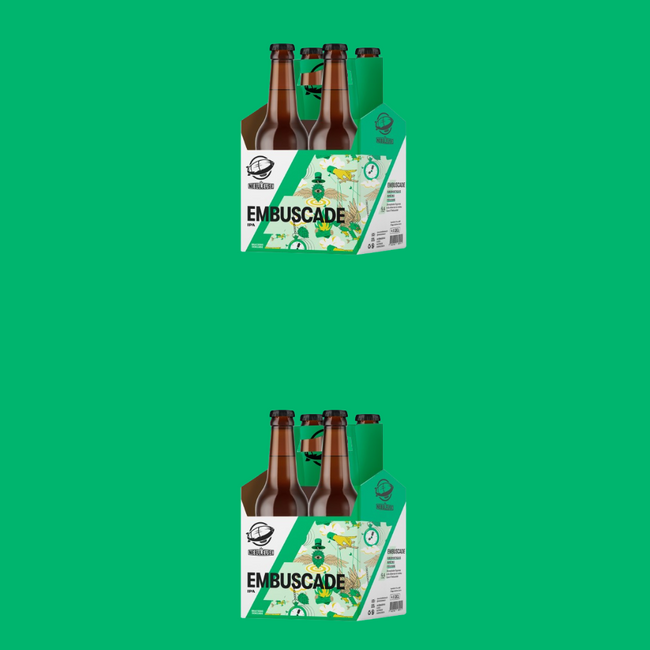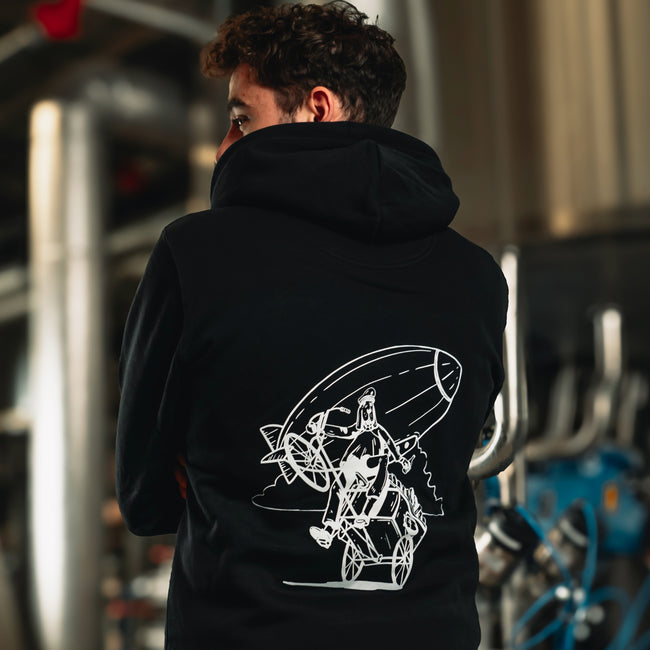These flaws that sabotage your best craft beers

First sip. Instead of the promised fruity explosion, the taste of wet cardboard invades your palate. Or worse: that buttery sensation worthy of movie theater popcorn. Game over. Your IPA has just joined the graveyard of failed beers.
Even seasoned brewers have their horror stories. The difference? They know how to turn these failures into lessons . This is exactly our philosophy at La Nébuleuse: understand the enemy to better fight it. Let's dive into the three families of flaws that transform masterpieces into disasters.
Oxidation: The Silent Killer of Your Hops
When your beer gets old
Oxidation is the kryptonite of craft beer. This insidious process transforms your beautiful citrus aromas into the whiff of a damp attic. The culprit? Trans-2-nonenal, a molecule that forms when fatty acids encounter oxygen under the wrong conditions.
The symptoms are relentless: notes of wet newspaper, a metallic sensation, and the gradual disappearance of hop aromas. And the temperature accelerates the devastation: a beer stored at 30°C ages eight times faster than at 10°C. Pure thermodynamics applied.
But oxidation isn't the only factor. The isohumulones in hops, under the influence of UV rays, decompose into 3-methyl-2-butene-1-thiol—the scent of skunk. A few minutes in the sun is enough. Green bottles? Might as well paint a target on them.
Our anti-oxidation arsenal
For our moonshine and its legendary freshness, we apply NASA-grade protocols. CO2 transfers, bottleneck injection before capping, and dissolved oxygen levels maintained below 50 ppb. The air contains 21% oxygen—we're talking homeopathic levels.
Zepp , our craft lager, receives the same treatment. Storage in total darkness, controlled temperature, rigorous FIFO rotation. Every parameter counts.
Your preventive weapons:
-
Purge with CO2 before any transfer
-
Maintain the cold chain (APIs should be consumed within 3 months)
-
Banish light exposure
-
Use ascorbic acid as a natural antioxidant
These principles join our long-term conservation techniques .
Contaminations: when microbes party
The Circus of Unwanted Flavors
Diacetyl turns your pale ale into a runny butter sauce. This molecule, produced naturally during fermentation, should be reabsorbed by yeast. Except that rapid cooling or stressed yeast abandon the cleaning process. The result: runny popcorn.
Wild phenols, on the other hand, are like the hospital in your glass. Notes of Band-Aid, disinfectant... Chlorophenols are created when chlorine in water meets natural phenols. A rather unappealing pool-pharmacy cocktail.
Uncontrolled esters? Molecular Dr. Jekyll and Mr. Hyde. Isoamyl acetate gives weizen those banana notes. But let the temperature run wild, and your beer becomes a synthetic smoothie. The line between fruity complexity and solvent? Thinner than a yeast hair.
Bacteriological warfare protocols
Our Speakeasy exemplifies our commando approach. PCR tests to detect contaminant DNA, pharmaceutical CIP protocols, real-time monitoring. A deviation of 0.5°C? Immediate alert.
Stirling , our gluten-free pale ale, follows the same strict diet. We are the Big Brother of our yeasts— and they thank us with impeccable fermentations.
Temperature control remains our cardinal obsession. Each strain has its comfort zone. Stepping outside of it opens Pandora's box of off-flavors.
Packaging and service: the fatal last mile
Carbonation: balance on a razor's edge
Too much CO2? Your beer is going into a geyser. Not enough? Stale hop juice. Overcarbonation often indicates incomplete fermentation or an infection by wild yeasts that digest complex sugars. A guaranteed ticking time bomb.
Freeze-thaw cycles destroy protein structure. Temperature fluctuations accelerate oxidation according to Arrhenius's law: every 10°C doubles the reaction rate. A mistreated API ages four times faster.
When it comes to service, mistakes pile up. Poorly rinsed glasses? Goodbye foam. Dirty lines? Hello mold. Is the temperature wrong? Masked aromas or sickening heaviness.
Excellence down to the glass
Our Ambush and its blood orange complexity deserve respect. Like Double Oat , our smooth double IPA.
For HoReCa professionals:
-
Mandatory bi-monthly cleaning of lines
-
Cold rooms at 4-6°C, period
-
Stock rotation, IPA as a priority
For fans:
-
Thermometer = best investment
-
Vertical storage to minimize capsule contact
-
Post-transport rest before tasting
The art of perfect service complements these fundamentals.
Expertise as a philosophy
Here's your defect-proof survival manual. From wet cardboard to rancid butter, you now know how to identify these saboteurs. But more importantly, you understand that every defect tells a story of avoidable negligence.
La Nébuleuse has transformed this vigilance into an art. Not out of a perfectionist obsession, but out of respect for the craft. Our draconian protocols, our systematic testing, our constant monitoring—all converge toward a single goal: excellence in your glass.
The next time you enjoy one of our creations, savor what's not there. No cardboard, no butter, no band-aid. Just the pure expression of our brewing vision.
Cheers, and may your beers remain forever immaculate!
Cheers 🍻









